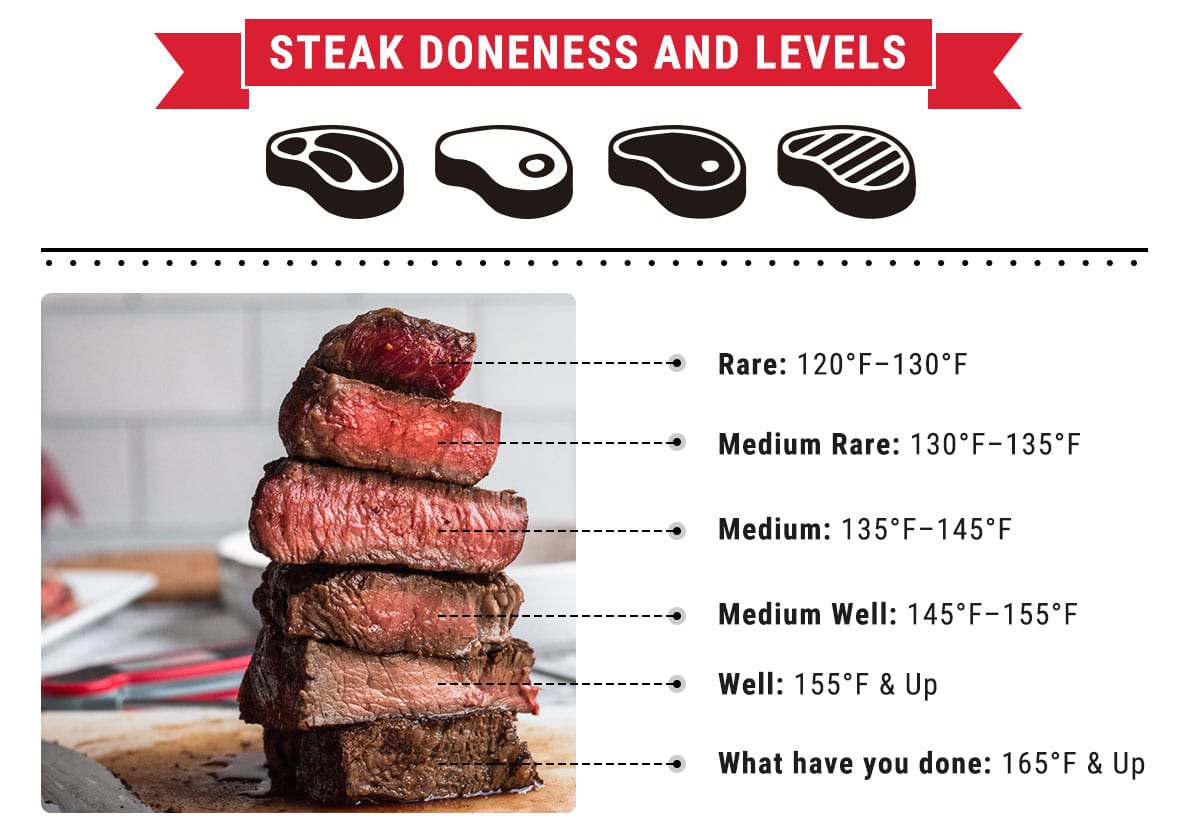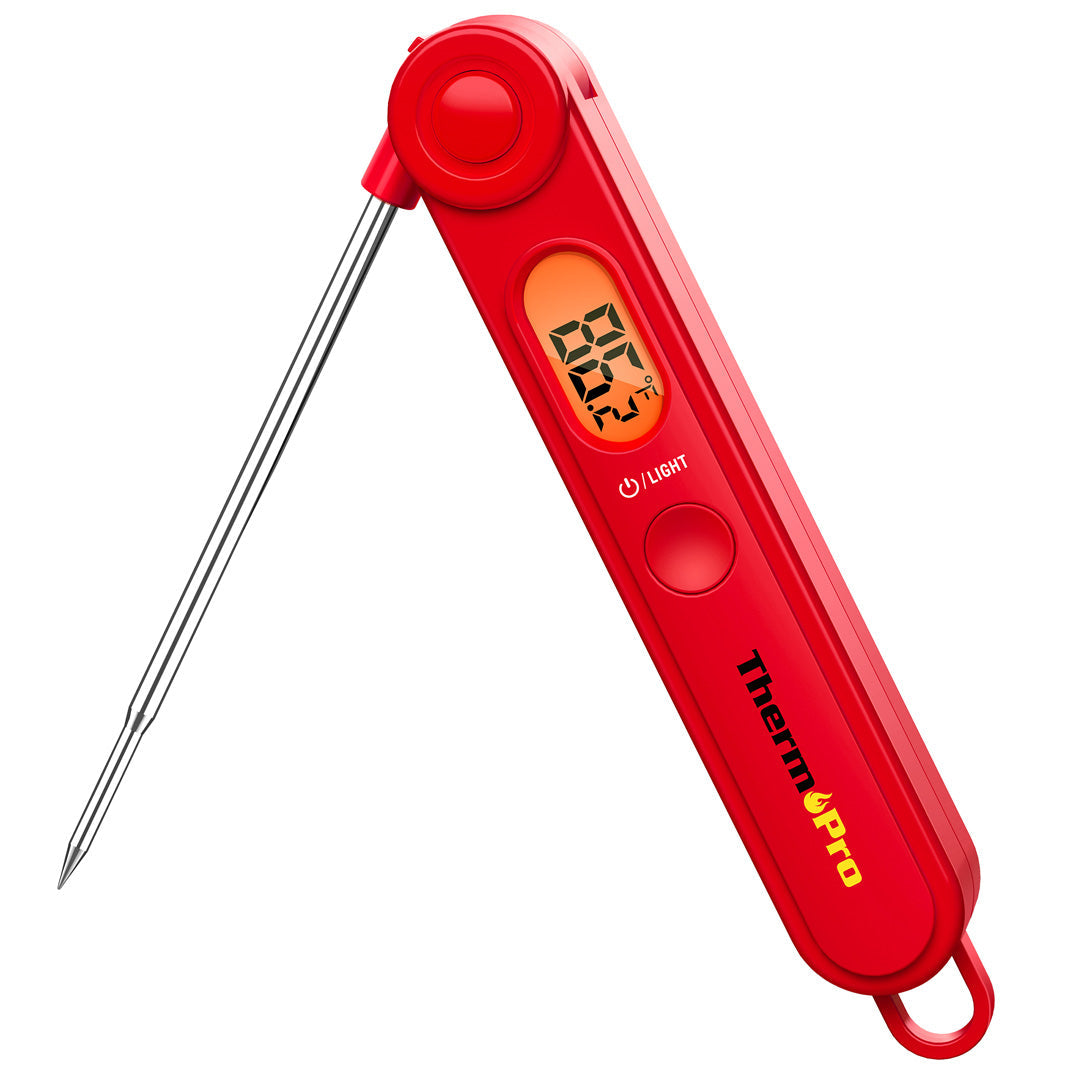No, That's Not Blood: The Science of Steak Juice






 288 Comments
288 Comments
One of the best things about eating steaks is that everyone is entitled to their own level of doneness. And although these differences can spark healthy debate, a rare-cooked steak will cause more controversy due to its so-called “blood.” However, this is a long-held misconception. In fact, the truth is that the “steak juice” found in a rare steak doesn’t contain any blood at all.
This will bring up some questions. What is steak juice, if not blood? Is steak juice healthy for you? And what role does a meat thermometer have in cooking great steak? In this straightforward guide, we’ll tell you the answers you need so you can cook the best possible steak!
What is steak juice?
A steak is an amazing food that doesn’t look or taste like anything else, and this has a lot to do with its appearance and juiciness. We’ve long associated steak with red and pinkish hues along with a reddish liquid. This is commonly thought to be blood, but this is far from the truth.
The redness found in steak comes from myoglobin, an oxygen-binding protein found in an animal’s muscles. This protein’s close relationship with oxygen largely determines the appearance that beef takes. And because beef has a high water content, the “steak juice” that we see on our plates is a combination of myoglobin and the water that remains from the cooking process.
Why does beef change color?
A freshly cut slab of beef starts out looking purplish in color. After it is exposed to the air for a while, the beef gets its iconic cherry red color as the myoglobin reacts to the oxygen in the air. Through oxidation, the myoglobin essentially “rusts” the meat (to put it simply); this same process causes beef to turn brown after sitting in your supermarket for a few days.
This protein is prominent in the muscles of older animals that are more active, explaining why veal is lighter in color and why turkey leg meat is darker than turkey breast. What’s more, myoglobin’s association with oxygen is a key element that determines the way meat looks.
As an aside, some commercial meat packers are said to have treated raw steaks with carbon monoxide to “lock” in the myoglobin in order to keep its fresh, red color

Is brown-colored raw beef bad for your health?
Brown-colored raw beef does not necessarily signify spoiling. Instead, brown beef that doesn’t show any red in it is simply a sign that the myoglobin in the beef has reacted with the air.
However, it does show signs of aging; the beef will be 3-4 days old by this point and will have to be eaten soon. For this reason, brown-colored beef shows a lack of freshness, and is often discounted at the supermarket.
Why are some steaks “juicier” than others?
As often seen on social media, grilled steaks are often shown to be oozing with “steak juice” after being cut on chopping boards. While this has a lot to do with the way it was cooked, it also has to do with the beef itself.
Fatty meat is better than lean meat for “juiciness” because it contains the proteins required to better maintain its water content. When fat and water emulsions are well balanced, this means water is more likely to remain after cooking, making it “juicier.”
How does cooking change the color of beef?
As an oxygen-rich protein, myoglobin is also the reason why beef changes color as it cooks. As heat is applied to the beef, myoglobin separates from its iron components and forms a hemichrome pigment that is brown/tan in color.
In fact, the color of beef changes according to its internal temperature at the time of cooking:
- Bright red interior: 140°F
- Pink: 140°F–158°F
- Grayish-brown: 158°F+
Since rare steaks and burgers aren’t exposed to heat as long, these foods will contain more myoglobin and, naturally, be more reddish in appearance.
For a simple guide to levels of doneness in steak, please follow the following suggestions:

Why are meat thermometers so important for cooking steak?
Cooking by internal temperature is a proper and scientific way to cook. However, its top disadvantage is that it’s not possible to see or examine the inside of your food. This is where a meat thermometer can solve your problem.
An instant-read thermometer like the TP03B or a wireless meat thermometer like the TP28 allows you to precisely measure the internal temperature of your food. A sharp probe is inserted into the central part of the food. This way, you can cook your steak to your exact personal preferences. If you like your steak to be pink in color, then you need to remove it from heat before it reaches 158°F, for example.
A meat thermometer is also important for healthy cooking. The USDA recommends reaching an internal temperature of 145°F when cooking steak, after which it should stand for an additional 3 minutes. In this way, you are sure to kill the bacteria that can make you sick.

What other kinds of reactions happen when cooking steak?
Cooking is a fascinating process in which all types of reactions can lead to delicious and fantastic results. By putting a steak over a grill or fire, it can undergo numerous changes:
- Maillard reaction: This complex phenomenon is the result of numerous, small chemical reactions that happen at the same time when cooking to form new flavors, colors, and smells. You’ve likely experienced this process when your food begins to turn golden-brown or brown.
- Caramelization: This process breaks down sugars to produce even more flavors. Common examples include cooking onions, apples, and bananas.
- Pyrolysis/charring (at very high temperatures): Produces a dark-colored carbon in the form of “crust” that many BBQ enthusiasts enjoy.
Final Thoughts
Steak is an incredible food to eat, and should be enjoyed without misunderstandings. There is no blood in “steak juice;” rare steaks aren’t unhealthy for being bloody because they don’t contain that much blood to begin with.
The one condition you need to adhere when cooking rare-cooked steaks is to get their internal temperature to 145°F. This way, you’ll know they are healthy to eat!
With so much going on when you cook a steak, it’s important to be equipped with the right tools. Be sure you’re ready for your next grill or BBQ session by getting a ThermoPro thermometer today!
Comments
You May Also Like

What Is the Most Accurate Meat Thermometer in 2024?

How to Grill Tuna Steaks?

Meat Cooking Temperatures: Beef Temperature


















